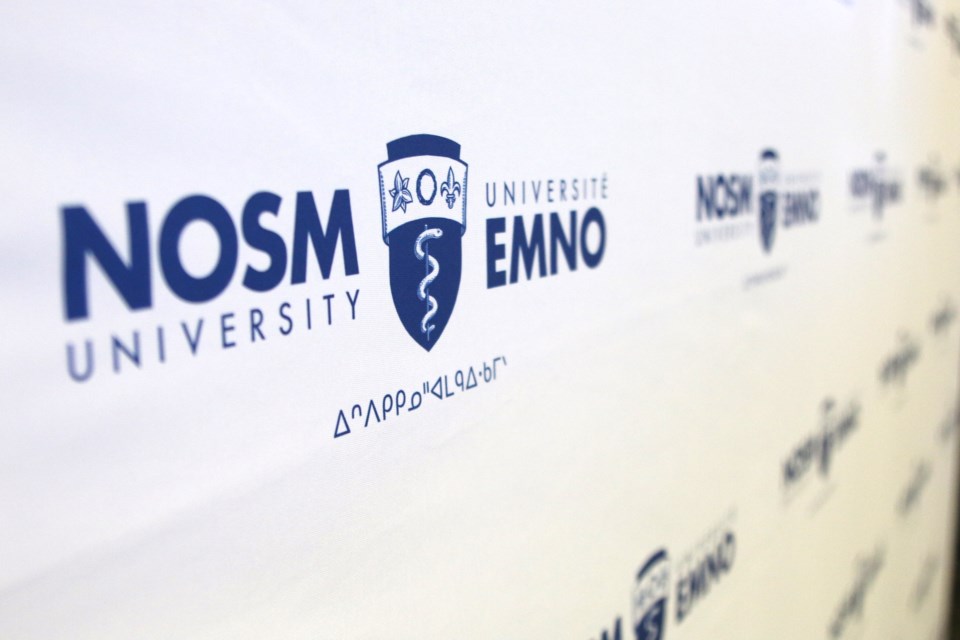THUNDER BAY — On the first anniversary of its re-birth as a stand-alone degree-granting institution, the head of the Northern Ontario School of Medicine University said she's "extremely satisfied" with the number of NOSM-trained doctors who are now practising in the region.
Dr. Sarita Verma said NOSM U has one of the highest recruitment and retention rates among Canada's 17 medical schools.
According to data provided to TBnewswatch, 1,011 physicians have completed their medical degree and/or residency at the former Northern Ontario School of Medicine since it accepted its first cohort in 2005.
Of these, 467 doctors — 46 per cent — have stayed to practise in the North.
"When you think about the fact that almost half of them actually stay here, that means we are filling our residency programs with people who are from NOSM," Verma said this week in an interview.
A residency is a period of training that all medical program graduates are required to take after university.
"The linear relationship that you expect between people being admitted to medical school and when they go into practice is still a work in progress," Verma said. "NOSM actually just started offering residency programs less than 10 years ago, and we have only offered nine of the 130-plus residency programs that people can undertake. So most of the graduates have to go somewhere else to do their residency."
Verma that some of these individuals are still enrolled in five-year or eight-year residency programs.
"So we have yet to see the outcomes of this," she said. "It's too early in the game."
NOSM University is implementing a significant expansion of enrolment in stages, resulting in a 32 per cent increase in the number of admitted students by 2025.
Verma said she's very pleased with NOSM U's retention record to date, but expects its contribution to filling the doctor shortage across the North will improve further in the coming years.
"We're going to almost be doubling the size of the MD program. We're also looking to open up many — almost 20 — residency programs," she said. "If you want to be a cardiologist, you can't train here, you have to go somewhere else. What we're going to do over the next few years is see that change. In the natural history of a medical school, it takes about three decades before you actually see the direct output from the input."
But a significant challenge remains across Northern Ontario and across Canada in finding more family medicine practitioners.
Verma said although there's been a decline in interest in family medicine across the country, NOSM U has won awards for 13 straight years for having the highest proportion of students choose family medicine and go into rural family practice.
"We're tracking all of our data. It's too early for us to show all of it because it's a longitudinal process, but 50 per cent or more of our graduating class chooses family medicine. So there's a huge emphasis at our institution on family medicine. You would compare that to between 20 and 29 per cent of the graduating classes in the rest of the country."
She called that outcome "remarkable," but said there's an urgent need to get family doctors to serve the approximately two million Ontarians and seven million Canadians who don't have one.
Health care 'grinds to a halt' without access to a family doctor
"Without access to a family doctor, it grinds your health care to a halt.
Sustainability for critical care is a critical function for not just NOSM University but for the entire system.
One of the biggest problems is that we can bring people in and educate and train them, but it's actually up to the community, the municipality, the city, to then recruit and retain them."
Verma called models of remuneration for family practitioners in Northern Ontario not as effective as "much more seductive" models of remuneration elsewhere, such as turnkey office operations that allow doctors to immediately walk in and open up a practice.
But she also stressed that burnout from heavy workloads — exacerbated by the pandemic — and the administrative burden from having to do paperwork and toil seven days a week "with a take-home that's 20 per cent of what you earn" is not the way to attract more people to family medicine.
Verma said it's "mostly" up to the federal and Ontario governments to resolve this issue.
